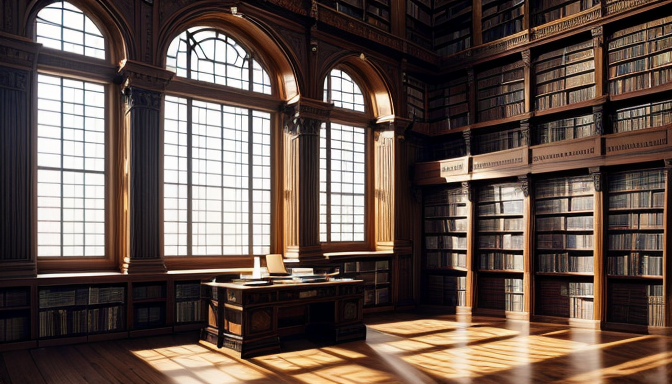Literary movements are like the heartbeat of literature, pulsating through time and reflecting the ever-changing human experience. Each movement brings a unique flavor to the literary feast, showcasing the thoughts, emotions, and struggles of its era. From the passionate verses of Romanticism to the stark realities portrayed in Realism, and the innovative techniques of Modernism, these movements have shaped how we perceive and interpret literature.
Imagine walking through a gallery where each painting represents a different period in history. Just as art evolves, so too does literature, influenced by the cultural and societal shifts around it. For instance, the Romantic era blossomed in response to the Industrial Revolution, emphasizing emotion and nature as a counter to the mechanical world. In contrast, Realism emerged as a reaction against Romantic idealism, focusing on everyday life and the mundane, capturing the essence of the human condition with unflinching honesty.
As we journey through these movements, we discover the profound impact of cultural context. Each writer, influenced by their surroundings, weaves a tapestry of themes that resonate with their audience. This interplay of literature and culture creates a dynamic landscape where ideas flourish, and voices are amplified. So, the next time you pick up a book, consider the era it represents and the movement it belongs to—it’s more than just a story; it’s a reflection of humanity itself.
Major Literary Movements
The world of literature has undergone a fascinating transformation through various literary movements, each leaving an indelible mark on the fabric of storytelling. From the passionate outpourings of Romanticism to the stark realism of Realism, and the innovative spirit of Modernism, these movements reflect the changing tides of society and culture. Imagine walking through a gallery of ideas, where each brushstroke represents a unique perspective on life and human experience. Isn’t it incredible how literature can mirror the world around us?
Romanticism, which flourished in the late 18th and early 19th centuries, emphasized emotion, nature, and individualism. Key figures like William Wordsworth and Mary Shelley celebrated the beauty of the natural world and the depths of human emotion. In contrast, Realism emerged in the mid-19th century as a reaction to Romantic ideals, focusing on the everyday lives of ordinary people. Writers such as Gustave Flaubert and Leo Tolstoy sought to depict life as it truly was, often highlighting social issues and moral dilemmas.
Then came Modernism in the early 20th century, which shattered traditional narrative forms and embraced experimentation. Think of it as a literary explosion, where authors like Virginia Woolf and James Joyce played with stream-of-consciousness techniques and fragmented narratives. Each movement not only shaped literature but also mirrored the evolving human experience, making them essential to our understanding of cultural history.

Influence of Cultural Context
The cultural context in which a literary movement arises plays a pivotal role in shaping its themes, styles, and overall impact. Just like a painter uses colors to express emotions, writers draw from the cultural tapestry around them. Think about it: how can a writer truly capture the essence of human experience without acknowledging the societal norms, beliefs, and struggles of their time? For instance, the Romanticism movement emerged as a reaction against the Industrial Revolution, celebrating nature and individualism at a time when society was becoming increasingly mechanized and urbanized.
Similarly, the Realism movement sought to depict everyday life and the struggles of the common man, reflecting the social changes and economic hardships of the 19th century. It was a literary response to the Romantic ideals, focusing instead on the gritty realities of life. Writers like Gustave Flaubert and Leo Tolstoy painted vivid pictures of their societies, showcasing the profound influence of cultural and political upheavals on their narratives.
Moreover, the Modernism movement, which flourished in the early 20th century, was heavily influenced by the trauma of World War I and the disillusionment that followed. Authors like Virginia Woolf and James Joyce experimented with form and structure, reflecting the chaotic nature of their times. The stream of consciousness technique, for example, mirrors the fragmented reality of a world that had been irrevocably changed.
In essence, literary movements are not just a collection of works; they are a mirror reflecting the cultural, social, and political landscapes of their times. Understanding these contexts allows us to appreciate the depth and richness of literature, revealing how deeply intertwined it is with the world around us.
Frequently Asked Questions
- What are literary movements?
Literary movements are groups of authors and works that share similar themes, styles, or philosophies. They often arise in response to cultural, social, or political changes, reflecting the zeitgeist of their time.
- How did Romanticism influence literature?
Romanticism emphasized emotion, individualism, and nature, breaking away from the structured forms of previous movements. It celebrated creativity and the sublime, paving the way for modern literary expression.
- What role does cultural context play in literary movements?
Cultural context shapes the themes and styles of literature. For example, the social upheaval during the Industrial Revolution influenced Realism, leading writers to focus on everyday life and societal issues rather than romantic ideals.
- Who are some key figures in Modernism?
Key figures in Modernism include James Joyce, Virginia Woolf, and T.S. Eliot. Their innovative techniques, like stream of consciousness and fragmented narratives, challenged traditional storytelling and reflected the complexities of modern life.